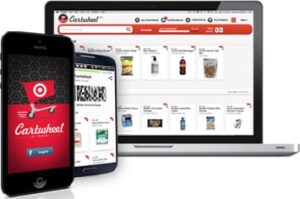Here are six retail and consumer behavior trends marketers need to understand to stay ahead of the competition for the 2014 holiday shopping season.
1. Price Matching
The year started off with major retailers reporting earnings losses due to heavy price matching. But going into the fourth quarter, we have Walmart rolling out new price-match app Savings Catcher. This dangerous race to zero has left most retailers (except Walmart) trying to figure out a way to engage in the low-price war without eroding brand perception, or sacrificing profits.
A better strategy is instant price-match rebates that give retailers the ability to offer a price match one product at a time, one consumer at a time. You’ll keep brand image intact and margins healthy while still being able to offer the best price in market.
2. Showrooming
Showrooming behavior continued its sharp ascent this year, thanks to ever-improving technology and network reliability. While shoppers still want an in-store experience, their expectations have changed, and continue to evolve. They may go to a store to touch, feel and experience a product, only to leave and order online later.
parago’s research shows that as little as a $5 savings will tip the scale in Amazon’s favor. And the nascent Amazon Fire phone has us curious as to how much further they can bend shopper behavior in 2015.
 3. M-commerce
3. M-commerce
2014 has seen a rise in the popularity of shopper apps, and for retailers who develop their own, there’s huge potential. According to Fortune magazine, Target executives reported in May that users of its Cartwheel coupon app spent an average of 30% more per shopping trip, and visited its brick-and-mortar stores more often.
But as consumers continue to narrow down the number of downloads and apps they want to manage, the battle for true value will need to target multiple shopper needs — deals, shopping, social and content.
4. Crossing the Data Line
About 50% of consumers have told us they do not want to share their location data. As we sit on the slippery slope of big data overload, shoppers are responding positively to relevant marketing. However, marketers need to tread lightly, as use of handy tools like dynamic pricing, GPS tracking and iBeacon could easily turn off the savvy shopper (especially the heaviest user set, Millennials and Gen-Xers). If they’re not careful, retailers could see attrition similar to what Facebook has experienced for violating the perceived social contract.
5. Subscription Services
Not a new concept, but definitely one that’s exploded in popularity thanks to the Internet. A small-but-burgeoning minority of consumers are signing up to have everything from a month’s supply of toilet paper or diapers to a box of high-end beauty products show up on their doorstep every month. Amazon Prime opened the floodgates for delivery of any item, large or small, and Dollar Shave Club, Birchbox and others laid the framework. Major retailers and manufacturers are getting in the game. The questions is, how many boxes is too many?
6. Price Over Convenience
Although today’s wired consumer appears to be driven by instant gratification, a deep dive into their behavior reveals that value (or perhaps outsmarting the retailer) is a primary motivator. They are willing to shop around, and will even order a product online while standing in a store — looking right at the very same product — if the online price is lower. This practice, combined with the increase in the appeal of rebates and loyalty programs, underlines consumers’ self-professed willingness to go out of their way to get the best value.
Theresa Wabler is global director of marketing for parago, a global incentives and engagement company.



